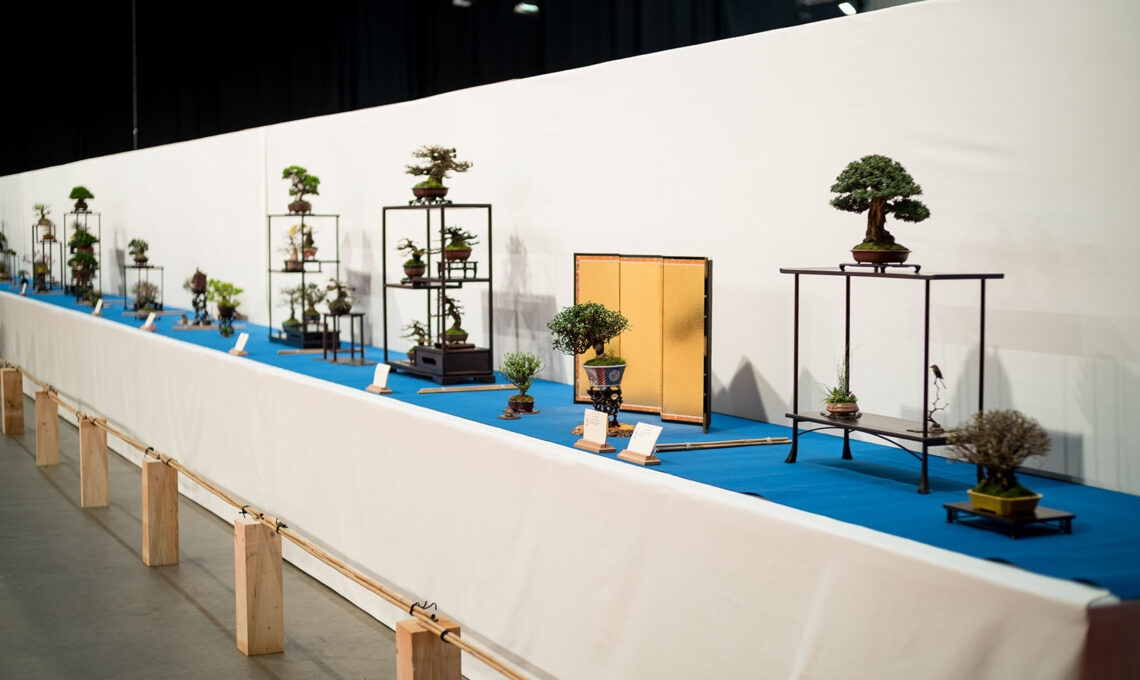
Judging Shohin Bonsai
Photos are from the private collection of Morten Albek and from 2020 edition of the Trophy in Belgium.
How to judge Shohin Bonsai is a frequently asked question. I will make a short introduction to the basics here.
Shohin sizes
Shohin bonsai differs from other categories of bonsai by their size. The All Japan Shohin Bonsai Association sets a limit size for each individual tree at 20cm / 10 inches measured from the rim of the pot to the top of the tree. This is not a rigid rule, because small jin´s or flowers may break through this limit and still be accepted.
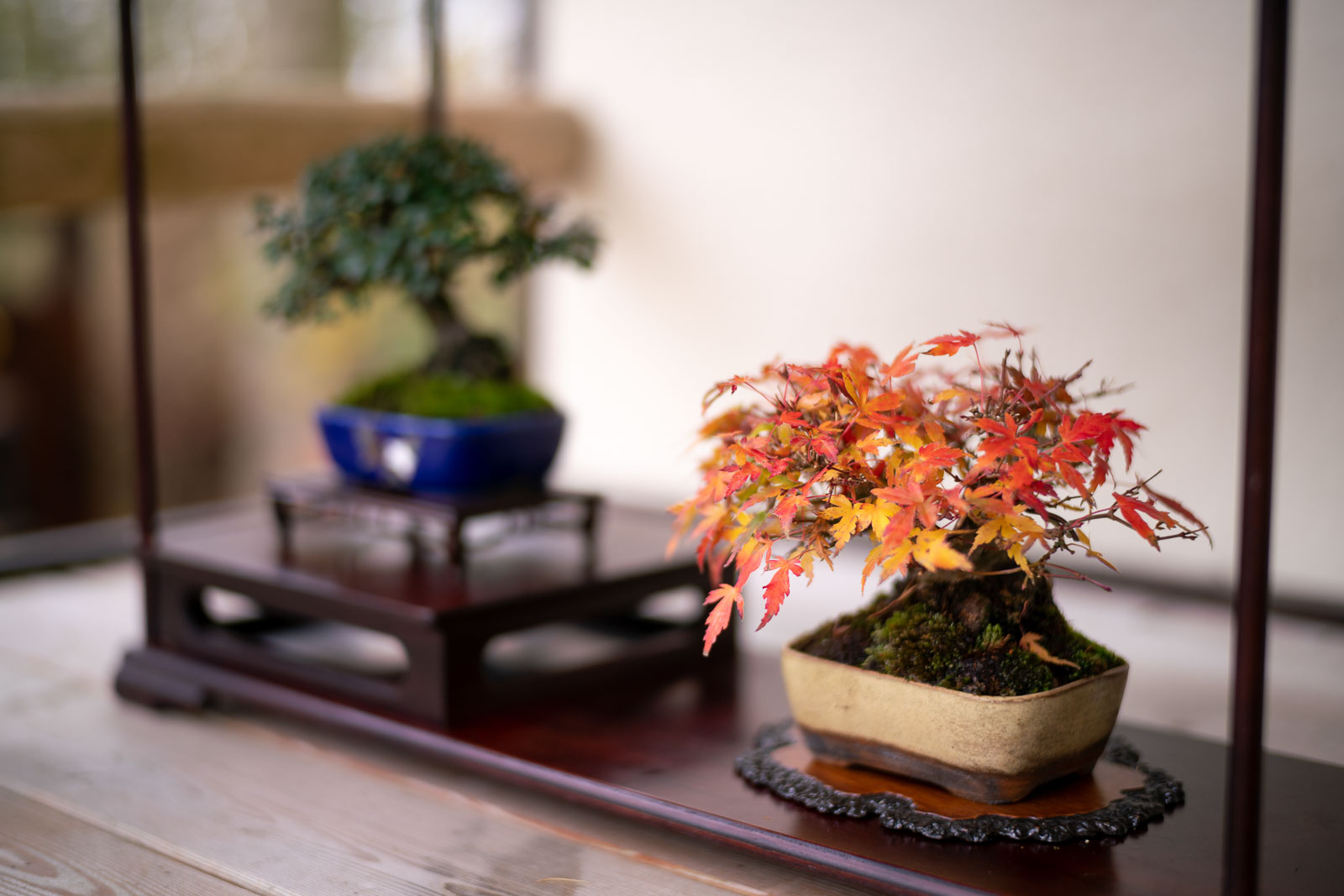
Displays
Shohin is always displayed with more trees together to add a seasonal feeling.
The standard displays show from five to seven trees normally and arranged in a typical rack normally.
For the subcategory mame-bonsai, less than 10 cm / 4 inches in height, more trees are often shown to fill out the preselected area.
Standard areas assigned for each Shohin display is often 90 X 180 cm, or a length of 120 cm for smaller Mame displays.
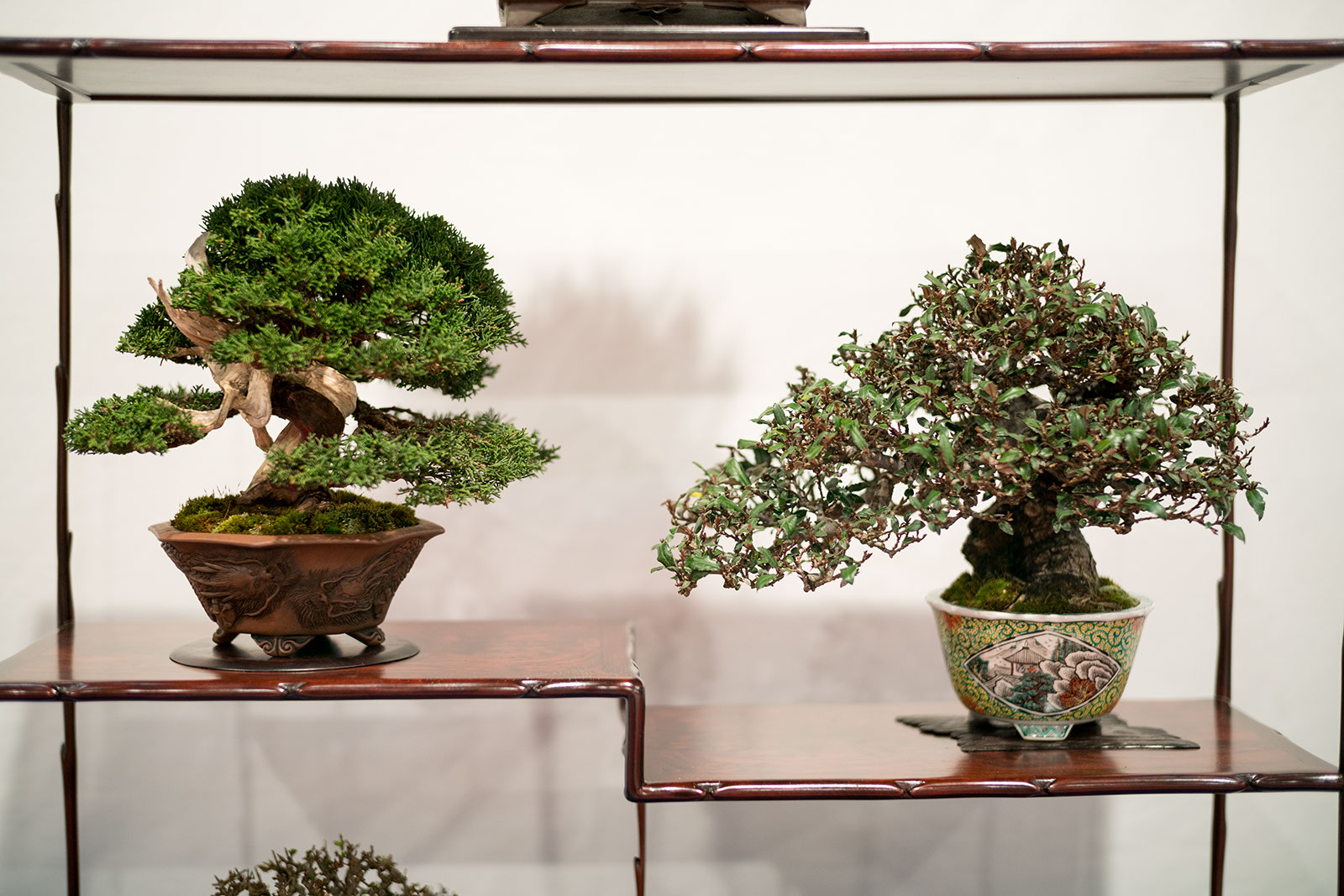
Variation and seasonal expression
Threes must be of different specimens or varieties, not repeating each other. Displays will not show two Japanese black pines but can show Japanese black pine accompanied by a J. White pine.
Also pots, forms and colours are not be repeated, as well as small stand used to elevate trees should not repeat each other in the form either.
The main tree is always (by tradition) showing a strong masculine tree, but no rules demand it to be a coniferous tree. Although this is the tradition it is not a rule, but a cultural approach.
The secondary tree shows a clear seasonal expression, often showing berries or flowers for example.
The space within the rack supports this seasonal feeling. In winter this can be both a Zelkova with leafless branches and a Juniper with green needles.
Scrolls are rarely used because it all gets too crowded and negative space is very important to achieve harmony and simplicity.
Three-point displays
A variation of the form and norm is the three-point display. In this display type, two trees are used, with an accent planting and most often added a scroll or screen. Here the main tree may exceed the size of a Shohin in some displays and is judged separately. Again, the changing seasons is the main expression.

Judging
When judging Shohin bonsai it is always the full displays that are judged.
Of course with the focus on the quality of the trees as a group and the arrangement of the display.
Does it show the season clearly? Is it harmonic and peaceful? Do the trees show balance within the full composition? And so on…
Only when two or more displays are equally good, judges begin to pinpoint the individual quality of single trees and comparing these. To decide a winner.

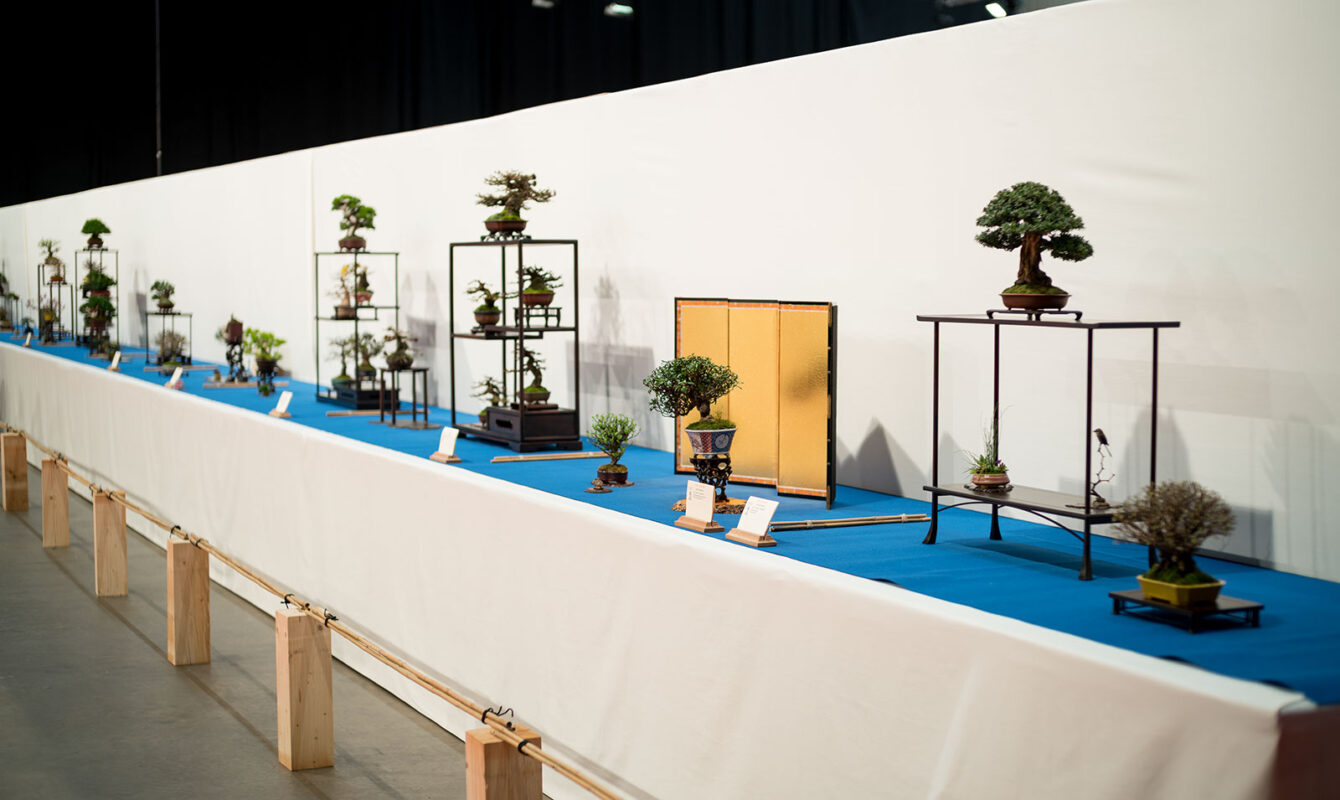
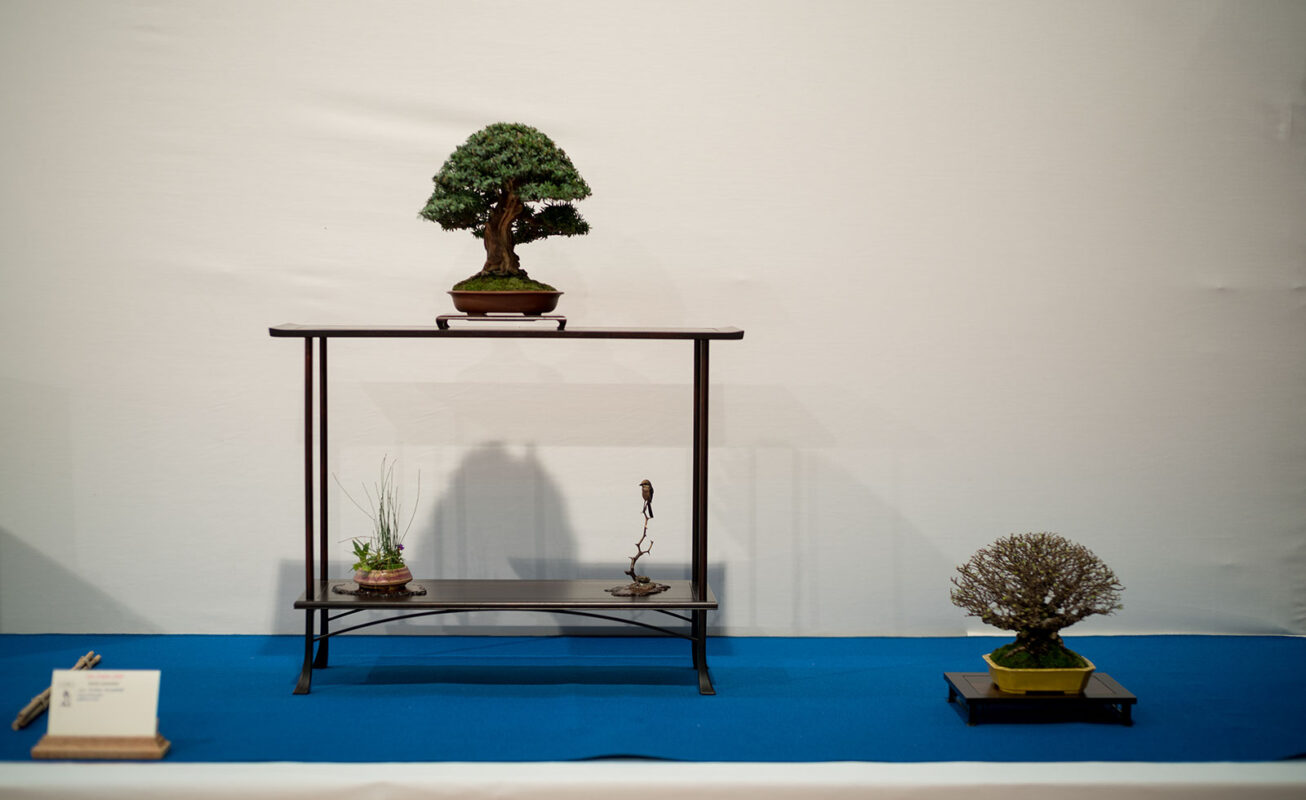
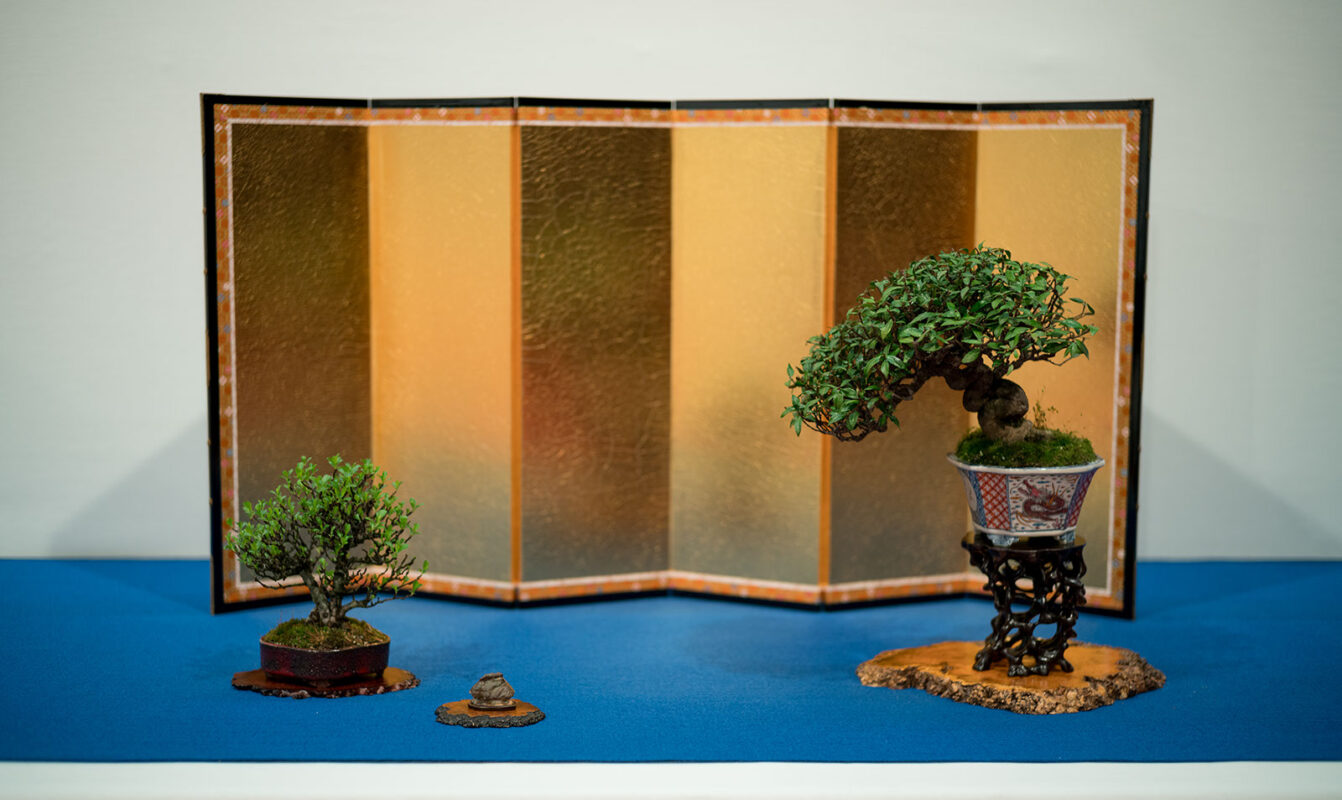


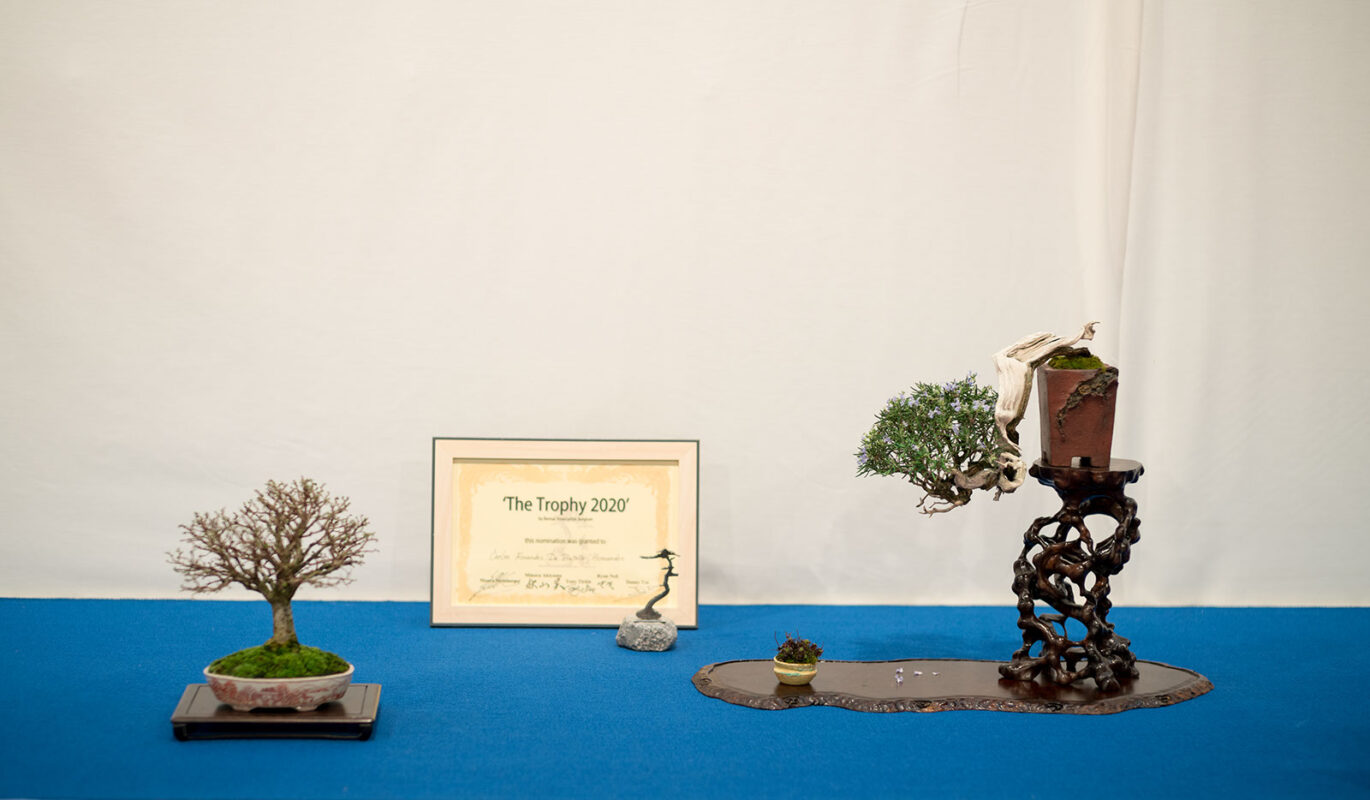
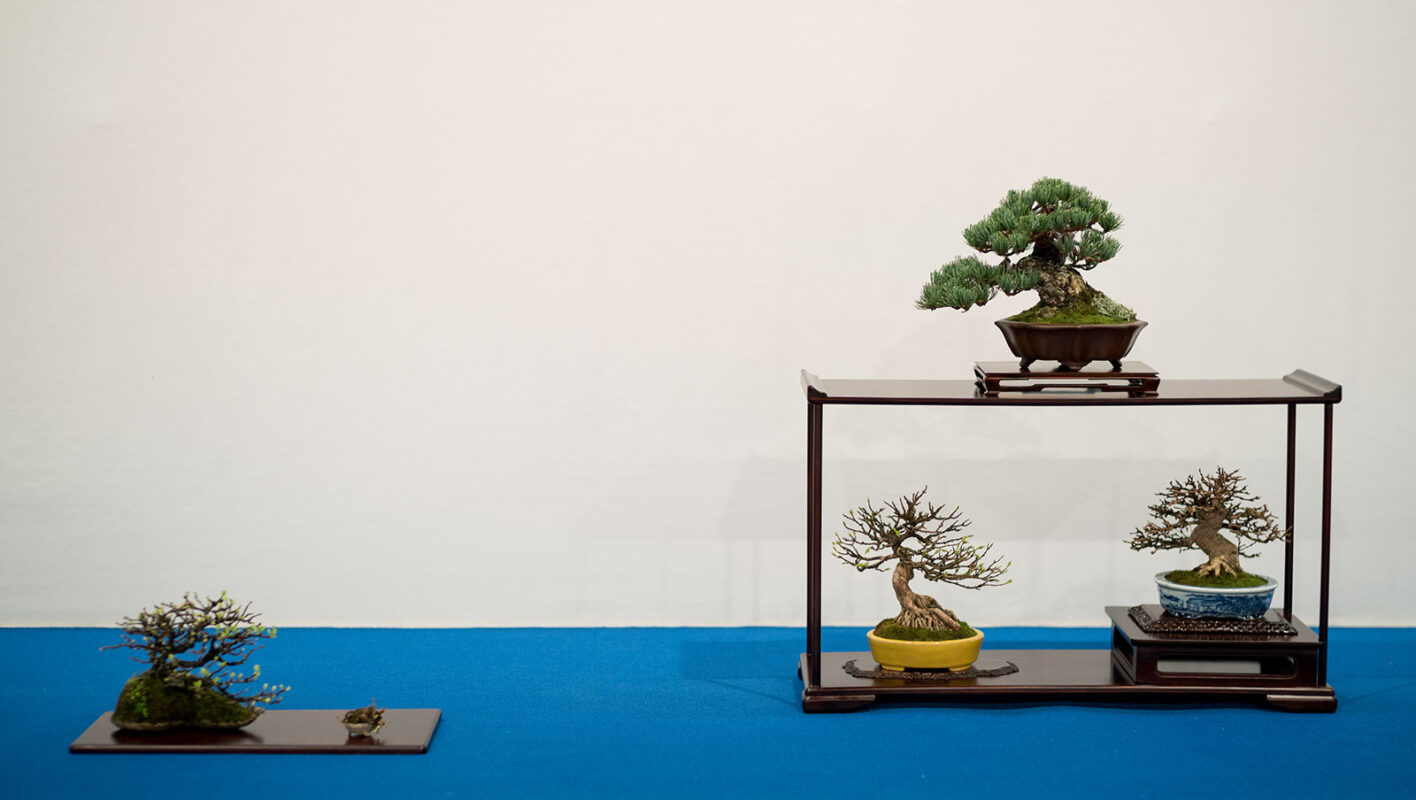
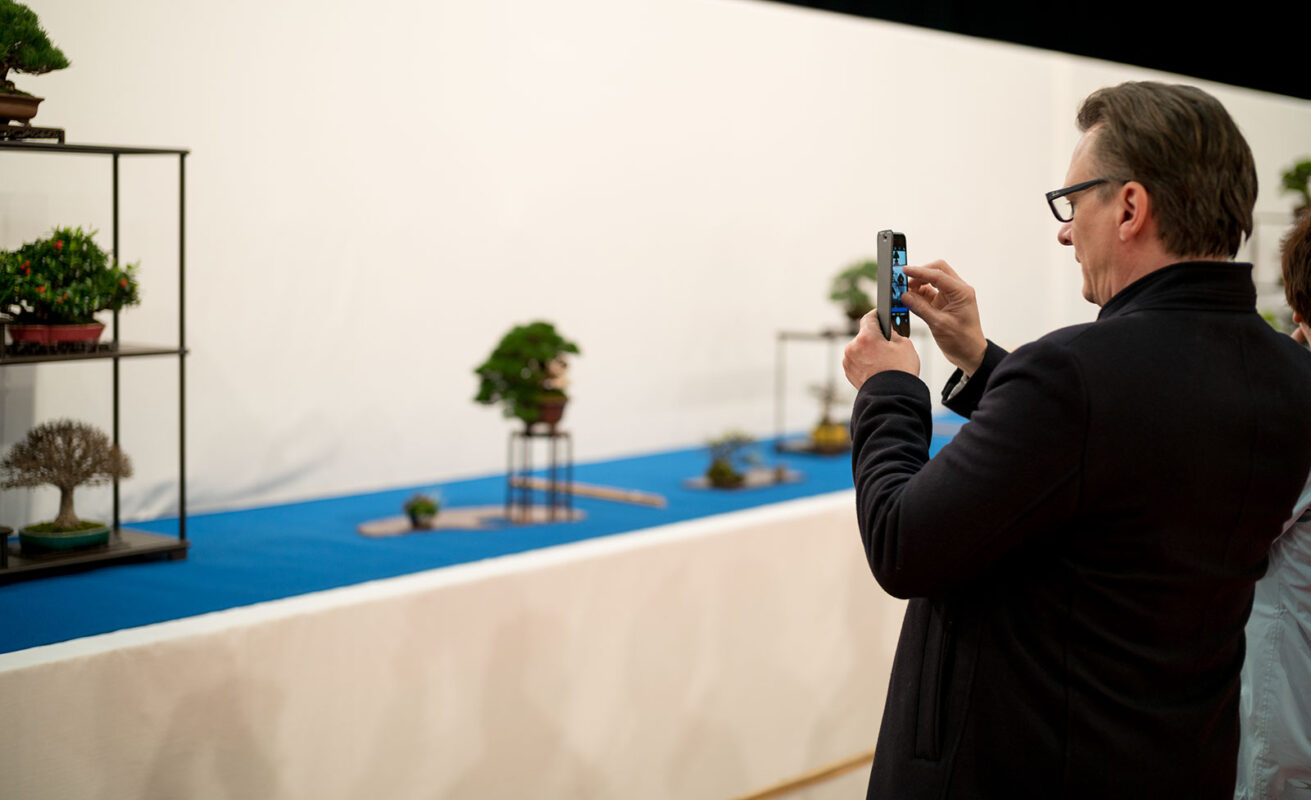



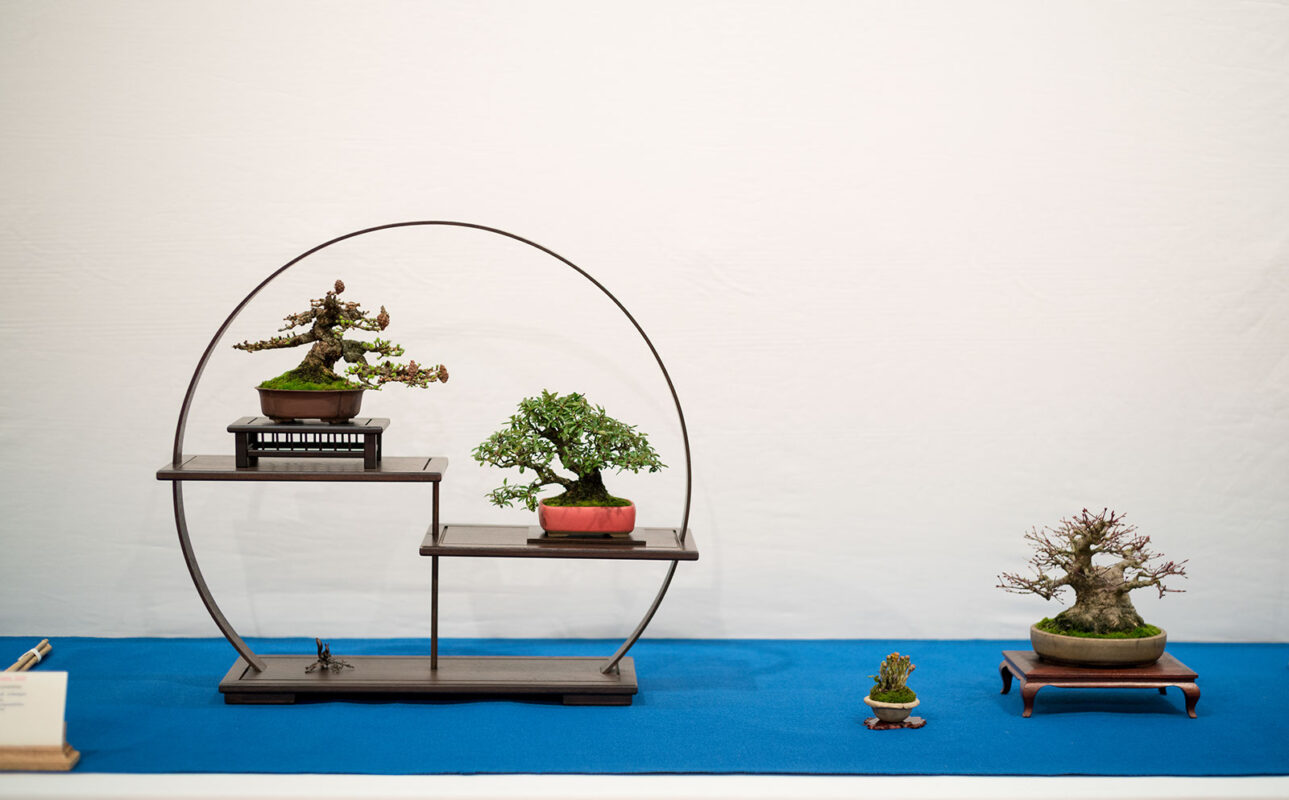
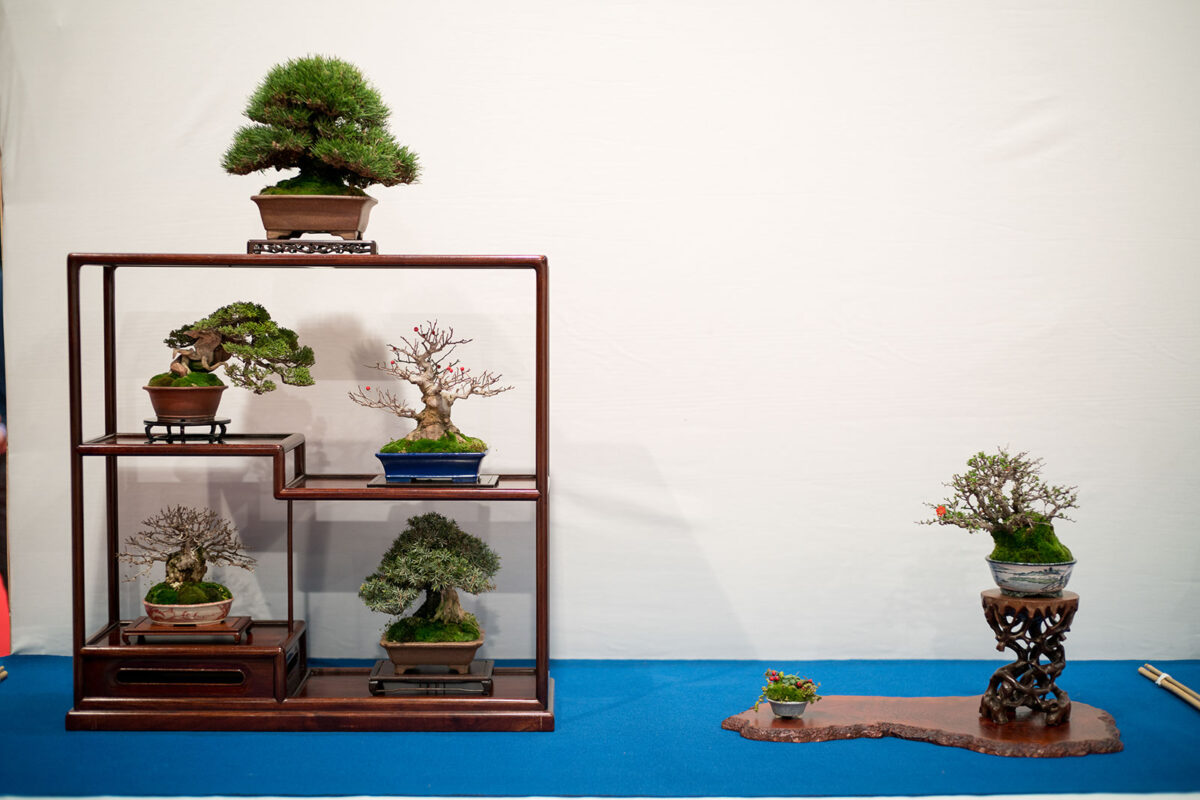

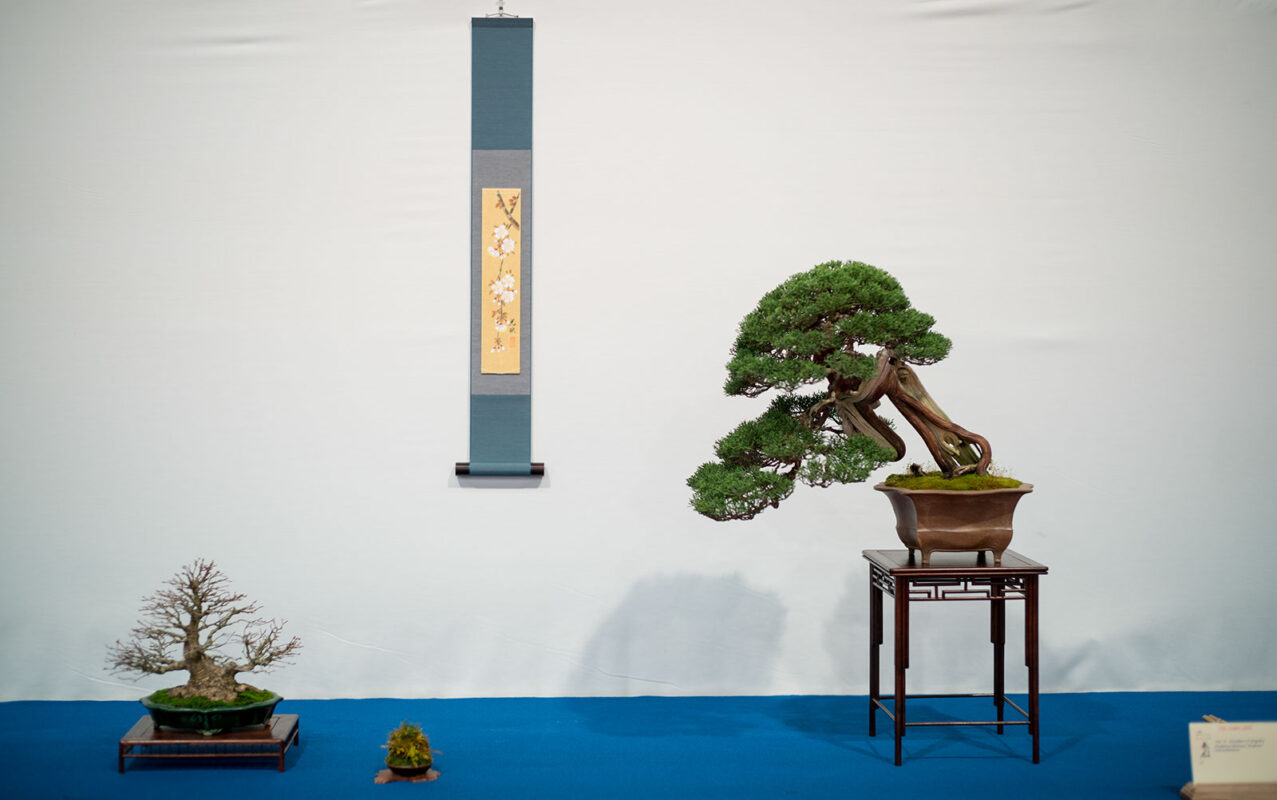
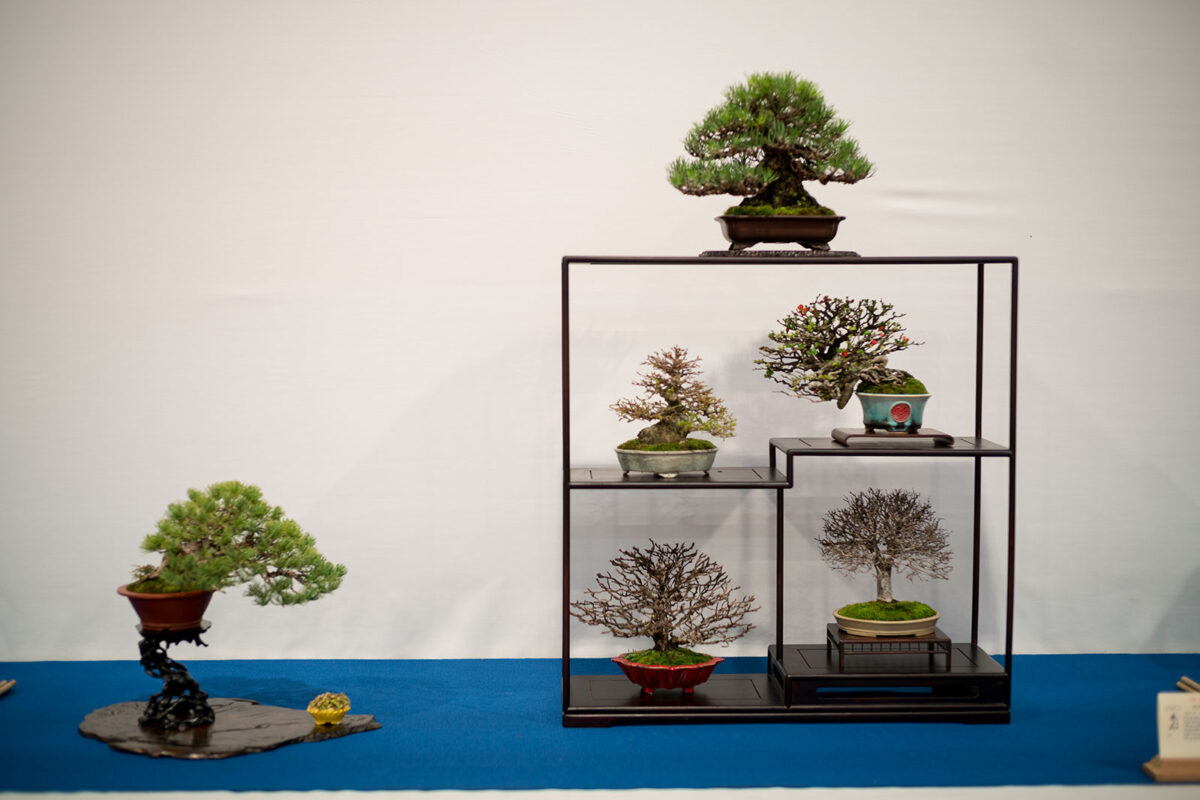
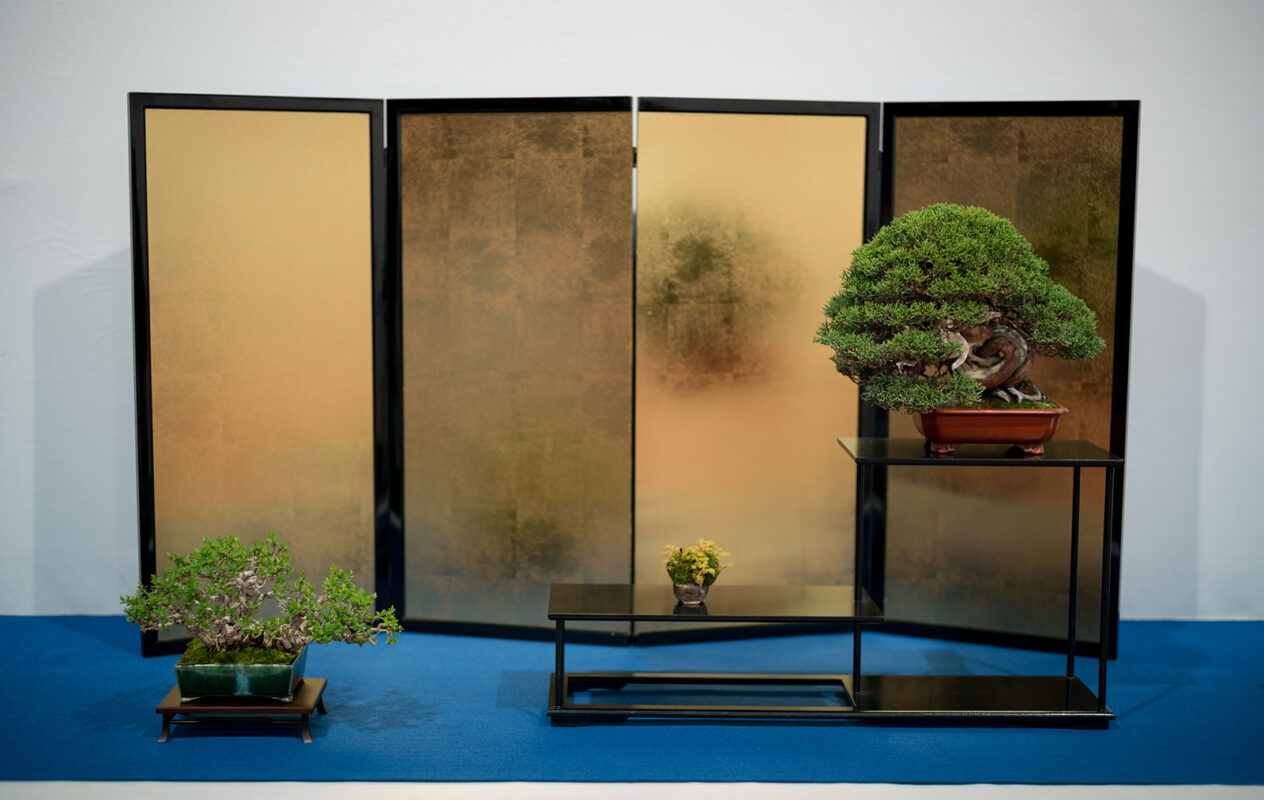
4 Comments
Pingback:
Peggy L Howard
I’m sorry I had read / watched all your items in the library, so went elsewhere for something to see, waiting for you April posting. Came back and missed plenty. Thanks for more to see. By way, didn’t like much of what I saw. Thanks for something to come back to. May just watch library again.
Peggy
Peggy L Howard
My laptop blinked, so not sure went thru, so may be repeat.
Perfect timing was going to write… May be me but I’ve never seen a forest in a shohin display. Is it allowed? What about a clump? If yes, can you have clump and forest in same display? A Mother-daughter? twin trunk? 3 tree?
Pots are supposed to be different size, style, color. How much different in size? 3″, 4″, 6″ & 8″ in same display. I’ve only noticed aprox same size like all 6″ in rack. What did I miss?
albek
Hi Peggy.
All bonsai styles are allowed in Shohin size. Forest and clump styles as well. Forests are not seen so often for some reason.
But if you look in Shohin exhibition catalogs and books, you will find them.
You will not have both a twin trunk and a forest, because they will be too much of the same.
Sizes can be the same, but form and colour is best if there are variations.
There are different opinions around Japanese master regarding if sizes of trees should be close to the same size of all trees, or there have to be more variation:
But! No rules, only guidelines and different expressions.
Therefore it is interesting. There are no easy answers and you didnt miss anything. It is just not straigth forward.
Kind regards
Morten